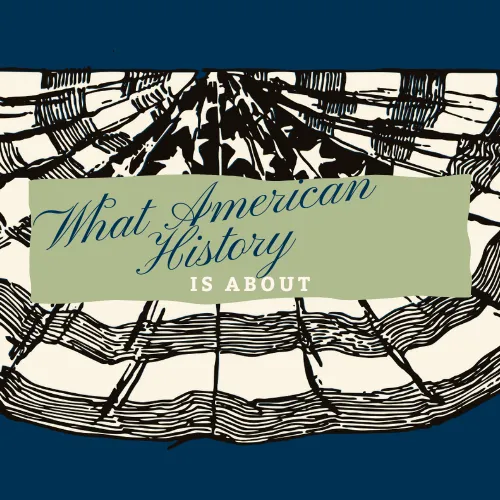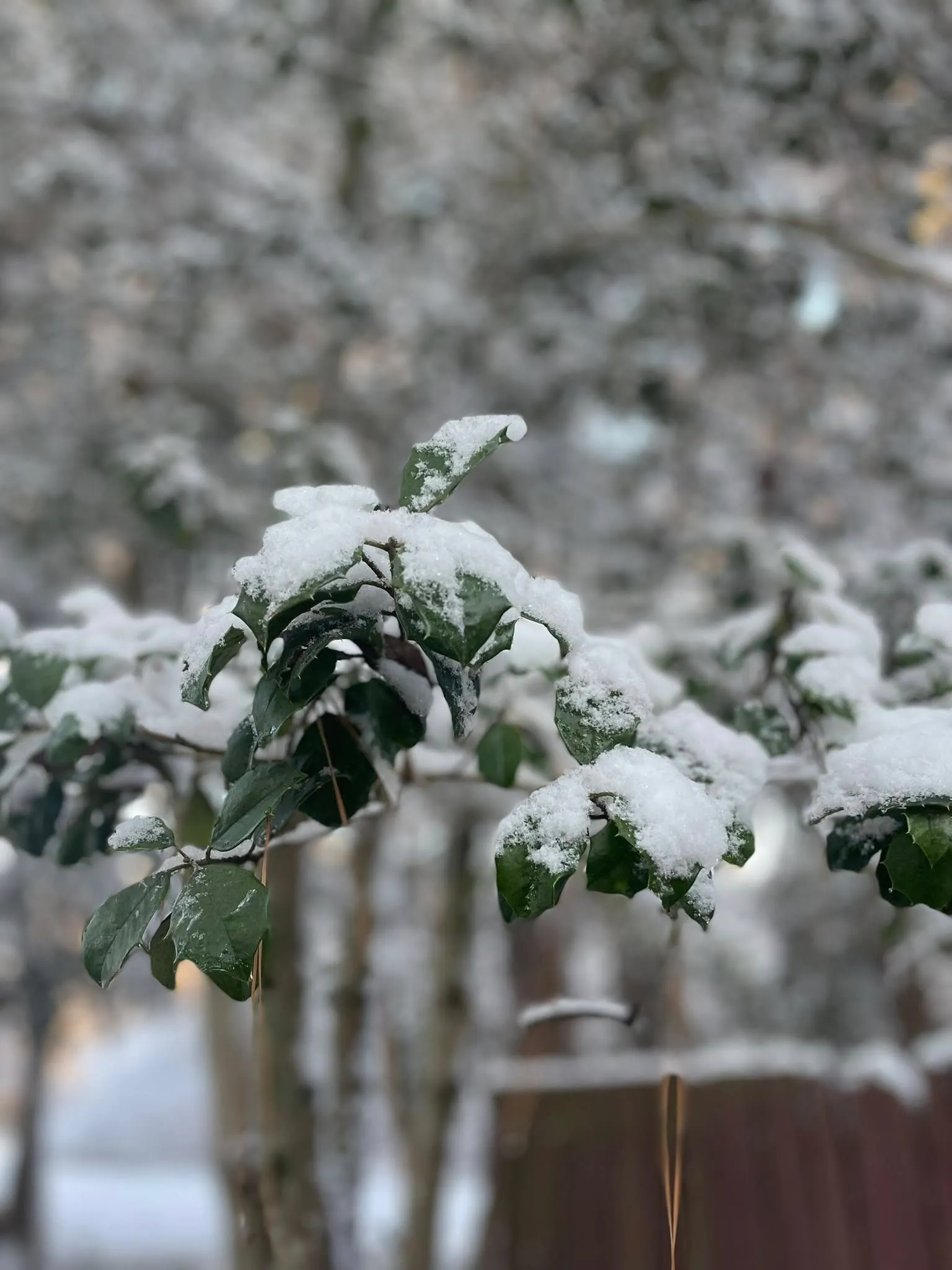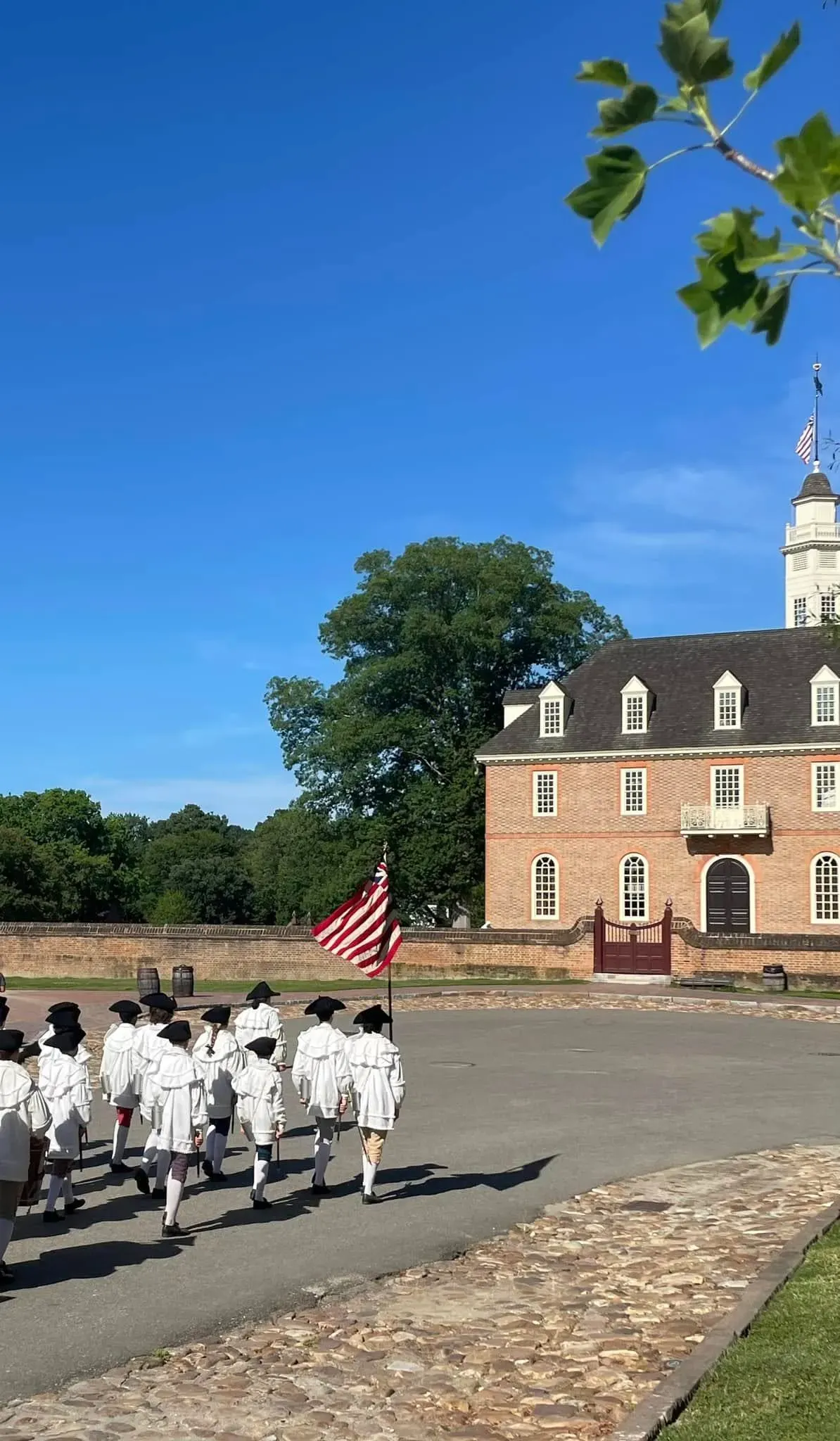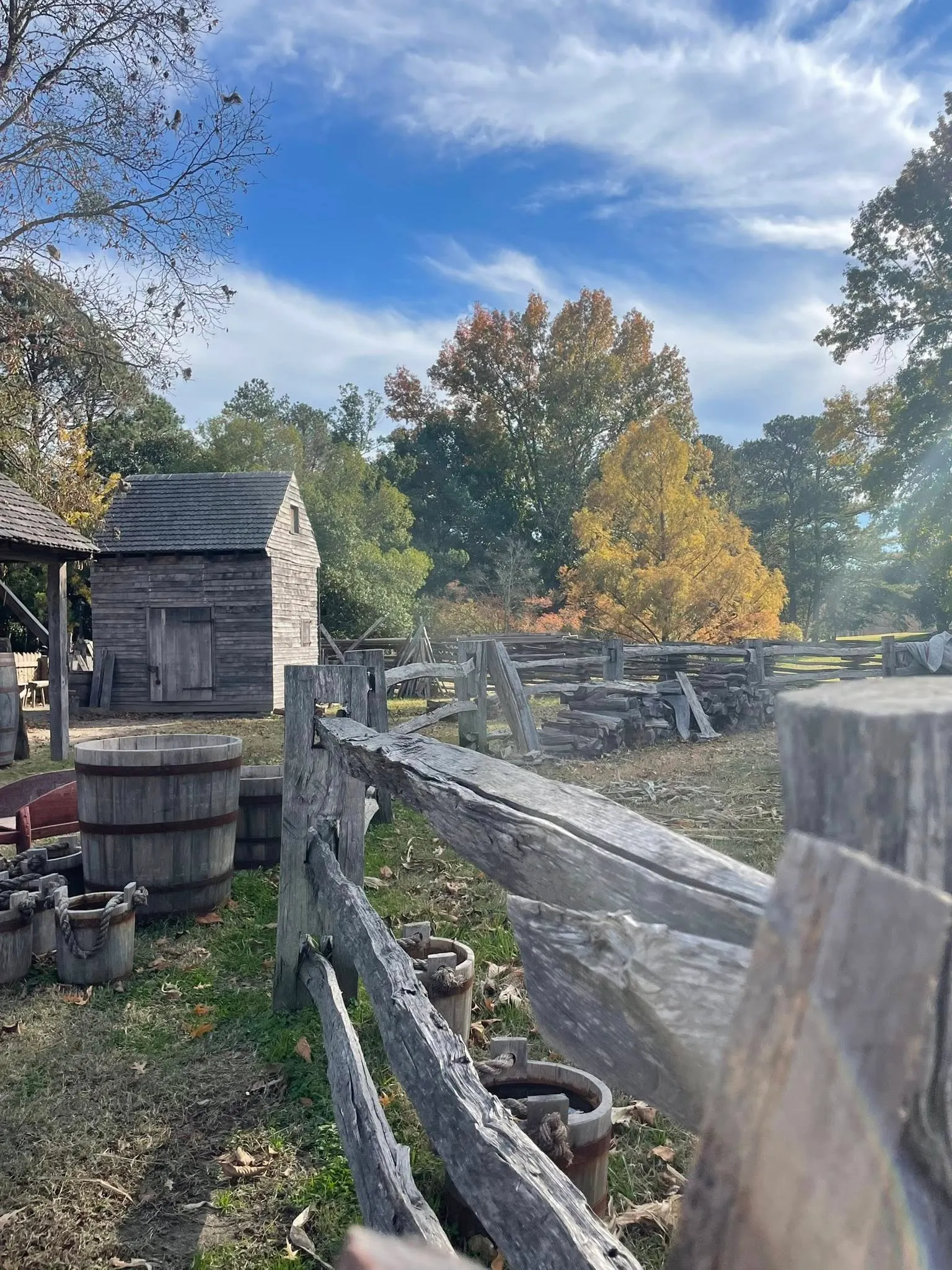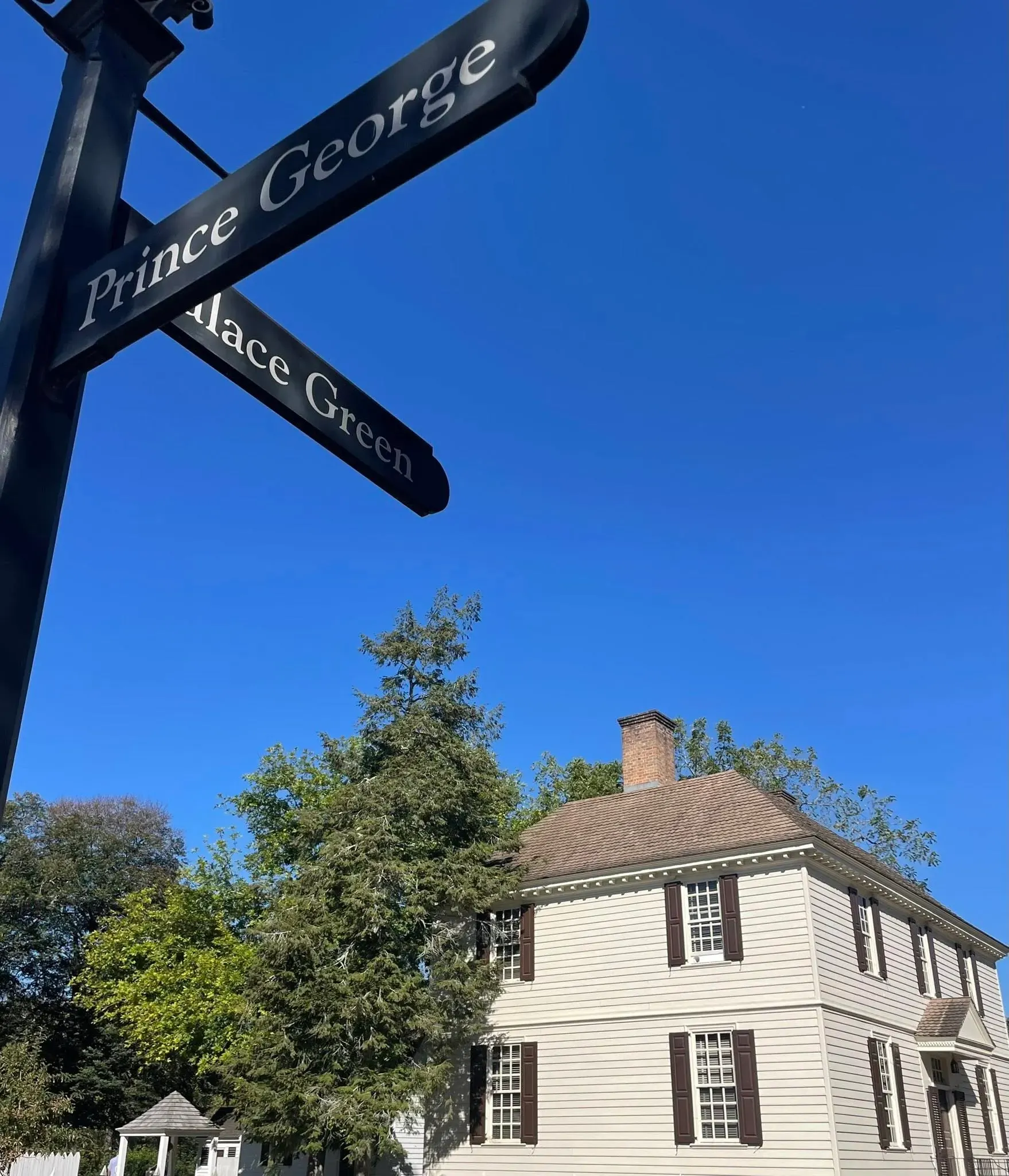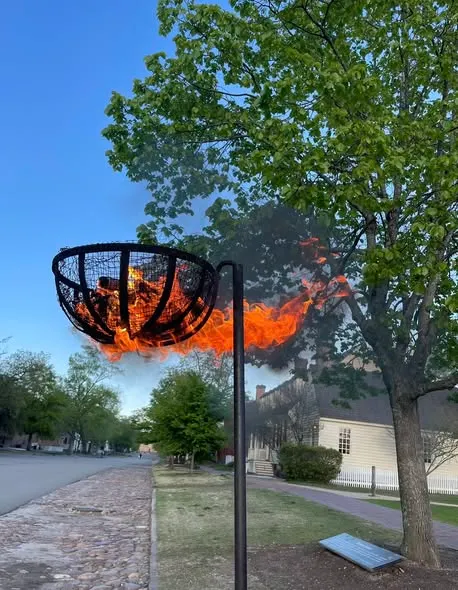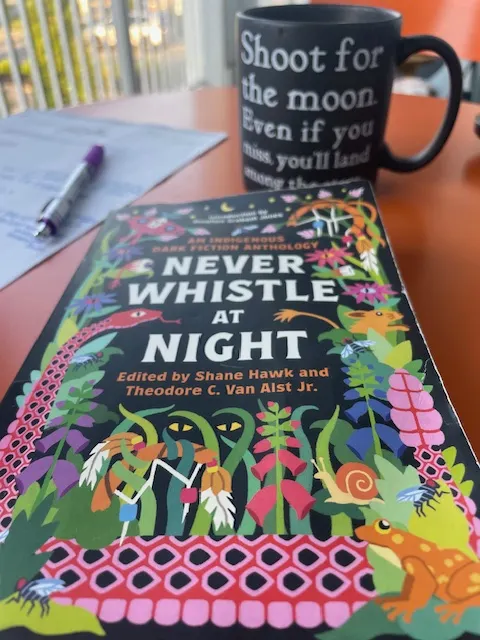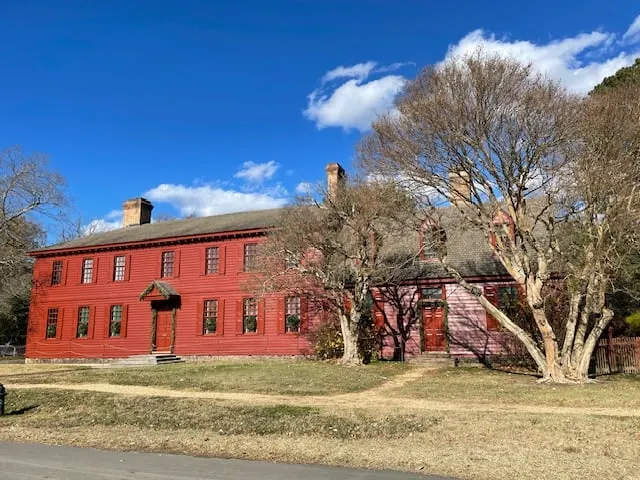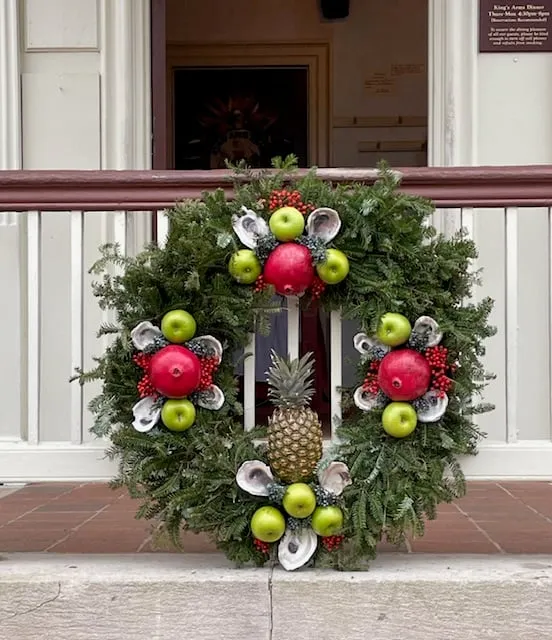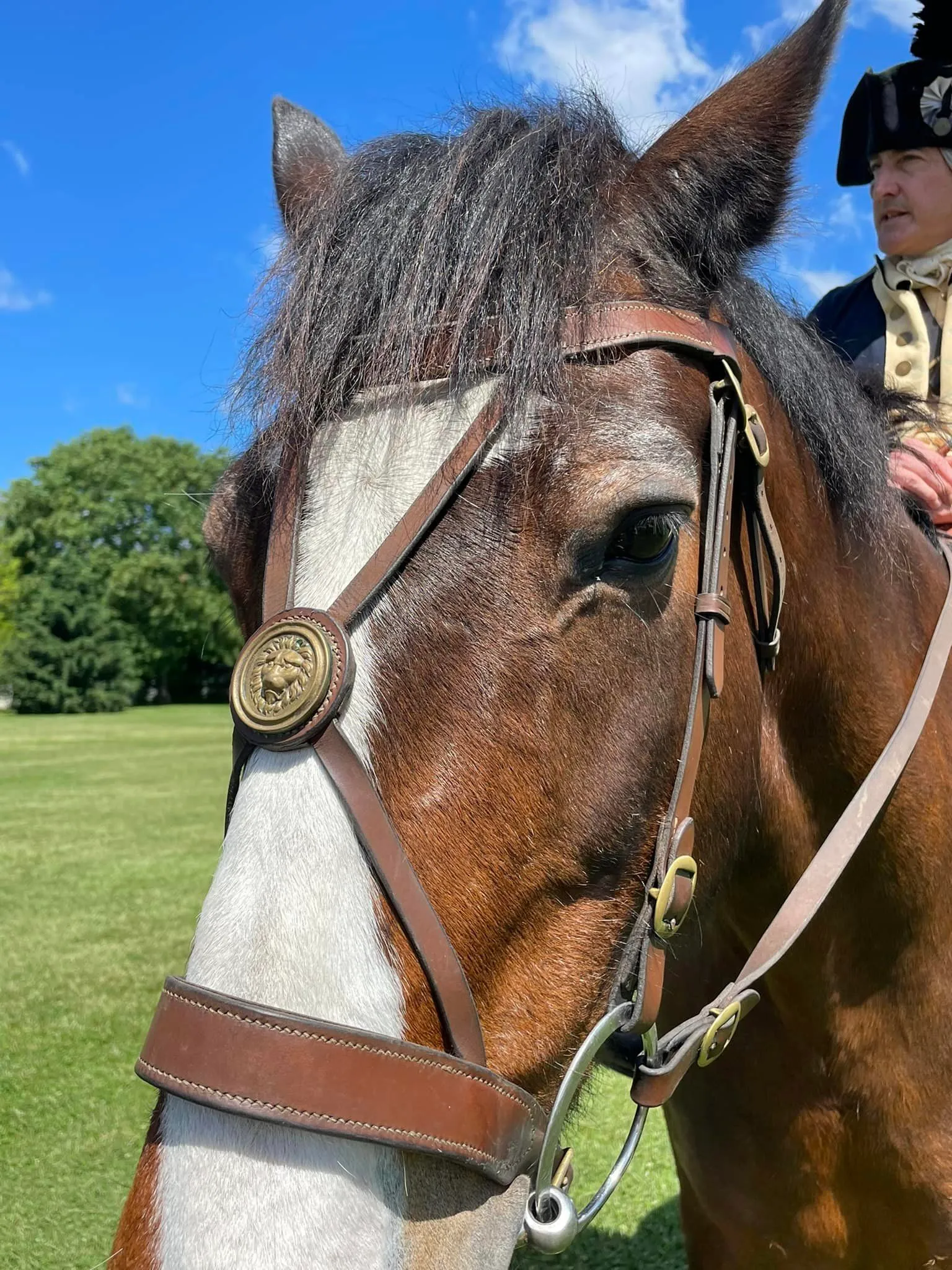No Matter Where You Go in Our United States of America: Find History Like I Did in Palm Desert. Here's How!
If you love history, you must seek it out- and dig deeper.
I was on vacation for the first part of May, but spent a lot of time doing Free At 50 business- now it’s time to turn to the history blog for a minute. No matter where I am, I can’t ignore the obvious: fill my cup with a little local history!
My parents live in Palm Desert, California- it’s where I was hanging out for almost two weeks. I won’t lie, when I think of “the desert” I think of Palm Desert being an extension of Palm Springs- home of “mod” architecture, where the Golden Age of Hollywood’s elite retreated from the bustle of L.A., and with streets named after everyone from Dinah Shore to Bob Hope- that makes total sense, right?
Wrong. Taking my own advice, I decided to dig a little deeper and made a quick trip over to the Palm Desert Historical Society- and loved every minute spent with docent Don in the museum.
Disclaimer: As a blogger, I use affiliate links sometimes! I may receive commission from purchases I share; it does not change your price but sometimes you might get a discount.
Let’s talk about Palm Desert: 4 things I learned.
Specific to the Coachella Valley, the region in which Palm Desert "resides," I picked up quite a bit of information and history I wasn't aware of.
Patton set up the Desert Training Center (DTC) on donated land in Palm Desert. And like a million troops (give or take some thousands) were trained here during the World War II years.
The DTC was a vital part of our military history and Patton's legacy. Click here to read more about Patton's work in Palm Desert.
Walter White created modernist designs unique to the desert.
I'll add that he also spent many years designing architecture for residences in Colorado. But truly, he was from San Bernadino and southern California can thank him for creating a whole "look" the desert is known for when it comes to residential design.
He's credited with many homes in Palm Desert, and well-renowned for creating the famous "desert wave house" (click here for details). It's been restored and yes, you can actually rent it out- check it out here.

Walter White details, Palm Desert Historical Society
Indian Wells, the city's name, honors the literal "Indian wells."
Water wells were vital to the survival of native tribes in the Coachella Valley (it's a desert after all).
The Cahuilla people built their villages around the water sources available to them in the desert. While at the historical society museum, I was able to see a map of where the Cahuilla lived as well as hunting weapons and, of course, information on the wells.
Click here to read the history of Indian Wells on the city's website.
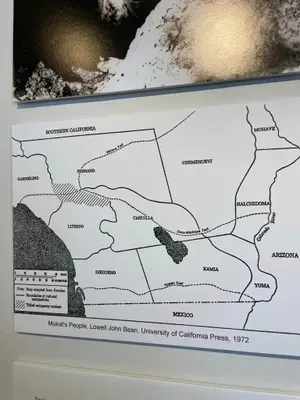
Palm Desert Historical Society map of Cahuilla lands
Randall Henderson was The Desert Editor who built up Palm Desert.
Henderson and his brothers are credited with creating the foundation of the Palm Desert we see today. The desert magazine did everything from show off the area to create jobs. He was passionate about the area and played a vital role in a post-war growth, taking it beyond the "Hollywood retreat" most knew.
(yes, there's a book and you can grab it on Amazon by clicking here!)
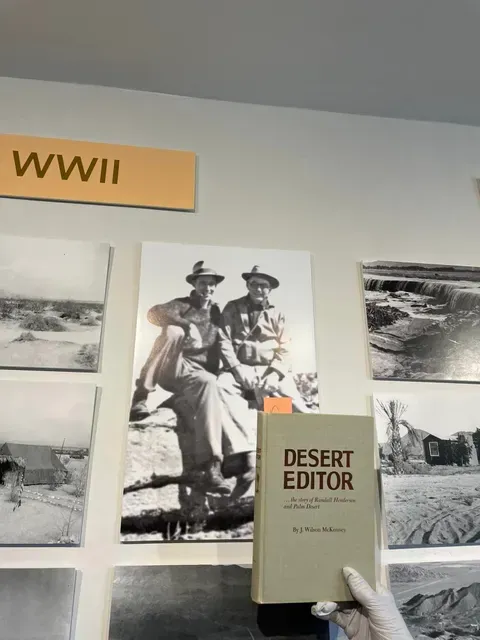
Don let me photograph him holding the Desert Editor copy he is reading.
These things will lead to more Palm Desert history on future visits! I'll be finding some it and digging deeper. There really was so much more... but I'll save that for a future visit and future post!
Let’s talk about learning history anywhere and everywhere: the “how” of this post.
Historical societies.
I started at the historical society and museum here in Palm Desert, where I learned the previously mentioned tidbits about the Coachella Valley from Don the docent.
Wherever you go, find that historical society! Tip: yes, you can Google it, but Tripadvisor is a fantastic resource.
Local libraries.
I’m going to credit Tripadvisor for this one. It led me to the City of Rancho Mirage Public Library where I learned a little history from this collection of gemstones and minerals! Who knew.
The observatory was closed the day we went, but I'll get back their during "open" hours someday.
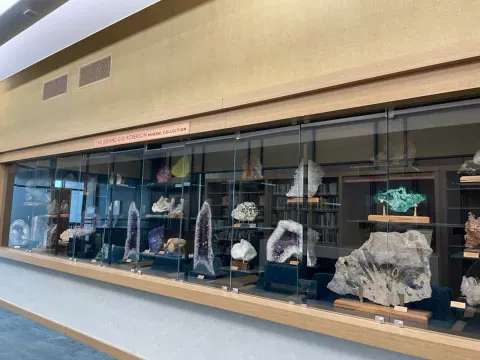
Popping into a local library for history is obvious in a way, but not something I often think about. I should think of this one on my own, being so enamored our Rockefeller Library in Colonial Williamsburg. It's where I find copies of the 18th century Virginia Gazettes, property ownership details for the city and more!
Do you wander into libraries when on vacation?
Other small museums.
For example, in my old home of Lansing, Michigan exists the R.E. Olds Transportation Museum. This place is a fantastic bit of local history to the auto industry in Michigan, but also for anyone into cars, fire departments, agriculture, yes- all topics that include transport.
Click here to see more about the R.E. Olds Transportation Museum.
Hit a coffee shop, bookstore, or other locally owned business.
Especially is it’s been around for years! Who knows local history better than the people who live in the area?
In fact, hanging out at the historical society, not only did I meet Don the fantastic docent, but also a woman visiting with her son, who just moved back to the area. She and Don were discussing the land her home sits on when I arrived.
Walk through a cemetery.
This is one of my favorite things to do. Just reading the headstones can truly give you a sense of place, let alone give you a glimpse into the lives of the humans that lived history- that’s what history is really about.
To me, all cemeteries are fascinating.
Taking advantage of the history near my home, one of the most fascinating visits was to St. John's Church, well-remembered for Patrick Henry's famous "give me liberty or give me death" speech I linked to here in my podcast post.
Why so fascinating? Some of the oldest tombstones in the United States and - get this- they actually have an adopt-a-grave program to restore those that are fading... to preserve the history cited on each tombstone. Click here to learn more.

St. John's Church- tombstone program
On a previous visit to California, we stopped into the famous Forest Lawn Cemetery in Glendale, where famous members of the entertainment industry, including Michael Jackson, are interred. While in Montgomery Alabama for business, I took an early morning detour to visit the graves of Hank Williams and his wife.
Take the time to wander the cemeteries... if you love history, and the humans who lived it, you won't be disappointed.
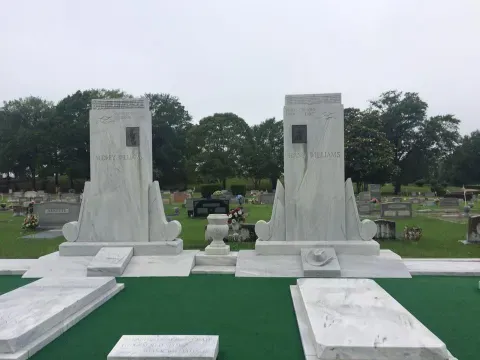
Oakwood Cemetery Annex, Montgomery, Alabama.
Visit a park.
You never know what hidden gems showcasing local history and/or culture you'll find in a park. On one trip to Palm Desert, we were wandering around the Civic Center Park (filled with flowers and ducks) and came across a Holocaust Memorial. It was breathtaking to find and so well done.
What people put in their part speaks to who's around, right?
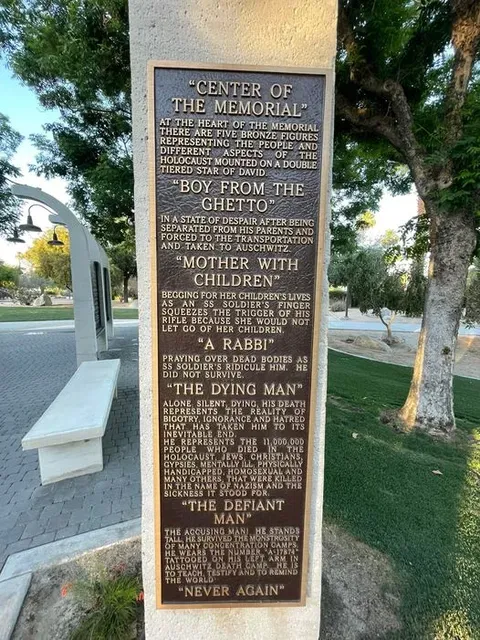
Holocaust Memorial- detail and descriptions, Palm Desert Civic Center Park
Stay inspired.
I hope I’ve inspired you always be on the lookout for history and take a few moments to hit one of these spots when you find yourself somewhere new. (and of course, in your hometown if you haven’t done it yet!)
Do you find local history wherever you go?
Closing words from history.
The following are the opening paragraphs of text about Patton's observations and beliefs with regard to the DTC. You can read Major-General Patton's full text by clicking here.
THE DESERT TRAINING CORPS
By Major-General George S. Patton, Jr.
Cavalry Journal
September October, 1942
To all who for years have been bedeviled by arbitrary restrictions on maneuvers, the situation at the Desert Training Center is truly as inspiring as it is unusual. In the whole 12,000,000 odd acres the only restrictions as to movement are those imposed by nature. Even so, these are more accurately deterrents rather than restrictions, for, with time and perspiration, you can go anywhere.
Another point about desert training that is alluring, particularly to artillery men, is the fact that one can open fire with live ammunition or drop bombs at any time and in any direction without endangering anyone. The mountains form the backstops and the parapets. As illustrative of this, seven target ranges, two moving target ranges, two mechanized combat ranges, and a normal infantry combat range have been constructed at a total cost to the government of less than one thousand dollars.
Those people who visualize the desert as a flat expanse of glistening sand, are in for a rude awakening, for while there are ample pieces of perfectly flat desert, there are other places with rocks, mountains, and trees. In fact, while in some places one is as visible as a fly on a kitchen table, in other places there is sufficient vegetation to conceal an armored corps. There is, however, one striking difference between the cover provided in Louisiana or the Carolinas and the cover provided by the desert -- the desert does not include mosquitoes.
(writing continues)
If you enjoy the blog and want to support both my ability to continue it and my habit for caffeine, click below to buy me a coffee using my online tip jar!
There is a huge practical disclaimer to the content on this blog, which is my way of sharing my excitement and basically journaling online.
1) I am not a historian nor an expert. I will let you know I’m relaying the information as I understand and interpret it. The employees of Colonial Williamsburg base their presentations, work, and responses on historical documents and mainly primary sources.
2) I will update for accuracy as history is constant learning. If you have a question about accuracy, please ask me! I will get the answer from the best source I can find.
3) Photo credit to me, Daphne Reznik, for all photos in this post! All photos are personal photos taken in public access locations or with specific permission.
